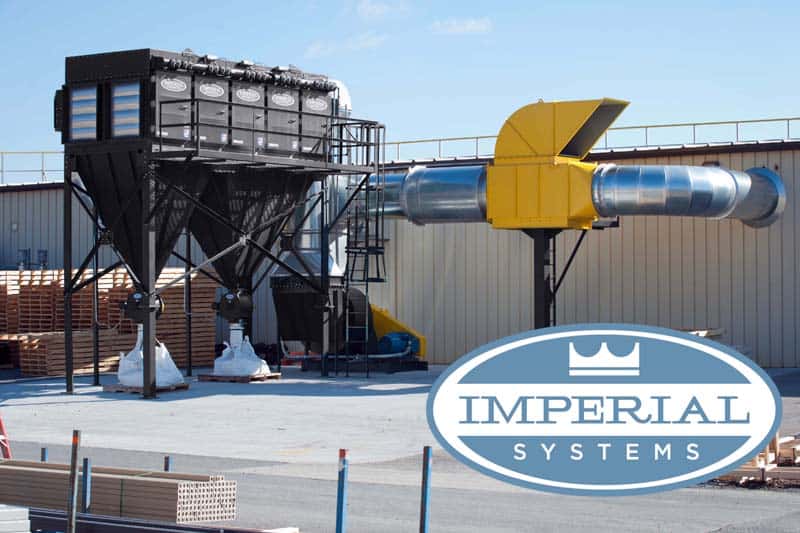
by Imperial Systems | Jul 19, 2016 | Uncategorized
We manufacture dust control systems that use filters (bags or cartridges). So, we obviously have a preference for dry systems. But what about a wet dust collector?
Wet Dust Collector Pros and Cons
Both wet and dry systems have their advantages and disadvantages. Many of them depend on your process, the type of dust you produce, and your individual needs. Baghouse and cartridge filter dust collectors work safely and efficiently for many years and in many different applications. However, as the concern of combustible dust issues grows, some companies are considering a wet dust collector. This system “scrubs” the air stream with water for dust control. Read on for some points to think about.
Type of Dust
Industrial wet dust collector design systems are often used where there is a concern about combustible dust. This is especially true for metal dust, which has a high likelihood of sparks coming into contact with the dust. You can also use dry systems in this application. But if there is a risk of deflagration, the system should include safety devices. This includes spark traps and fire-retardant filters that will not fuel a fire. Our DeltaMAXX™ nanofiber fire-retardant filters are rated to safely control a deflagration inside the collector.
Wet systems (often called wet scrubbers) can decrease the risk of fire or explosion as well. Water “scrubs” the air traveling through the collector, mixing with dust and forming sludge. This ensures that even if there is an ignition source, there’s no dust cloud or dry dust to ignite. At the same time, you can use dry collectors with proper maintenance and housekeeping safely for many years. They also can collect almost every type of dust imaginable.
Particulate Size
The filters in dry systems are more efficient at collecting and removing very fine particulate. Nanofiber filters are 99.9% efficient in capturing particulate down to .3 microns. Some cutting and grinding produce larger particulate. But applications like welding, plasma and laser cutting, and other processes produce very fine particulate metal fumes. A dry collector system can more efficiently capture these particles. In a wet system, it may be difficult to get very small particulate to settle out of the water to collect them. However, some wet system designs will handle this. Overall, a dry collector is more efficient for smaller particulate, smoke, and welding fumes.
Wed Dust Collector Operation Costs
To make a wet dust collector efficient at removing smaller particles, the system requires higher water pressure and a lot of energy. This increases cost. For larger particles, the energy costs are lower because it’s easier to get these particles to drop out. A dry collector requires compressed air to periodically clean the filters. Adjust the frequency of pulsing to suit individual needs. Filter media like DeltaMAXX nanofiber that pulse-clean more efficiently can further decrease the frequency. Both types of systems require appropriate equipment to maintain the correct airflow.
System Setup
Individual workstations such as downdraft tables often use a wet dust collector. With a central dust collection system, the requirements for ductwork and proper system CFM may be similar for wet and dry types. Because a dry system is more efficient at capturing smaller particles, you can use these where there are multiple locations in a facility producing welding or cutting fumes. Since dry systems are more effective in collecting smoke and fumes, they may be able to operate at a lower CFM. As a result, this saves energy and decreases the noise produced by the system.
On equipment like a downdraft table where sparks and metal dust are in close proximity, one can use a wet collector. However, many downdraft tables use a dry collector because they produce small particulates, smoke, or fumes. A full assessment of your company’s needs will help determine which type of system would be most beneficial for you. The assessment will consider both safety and long-term operating/maintenance costs.
Maintenance and Disposal
Maintaining a dry dust control system usually means changing the filters regularly and monitoring differential pressure. You must dispose of the filters which contain dust according to the standards for that material. You must dispose of the collected dust as well. Maintaining a wet dust collector system includes making sure the water remains clean, without too much material dissolved in it. Dispose of the contaminated wastewater. A wet collector requires the removal and disposal of sludge. The sludge may also need to be mixed with other materials or dried to make it safer or more easily disposable. Both system types will require proper housekeeping and maintenance of the ductwork and work areas to make sure dust doesn’t accumulate.
Depending on your type of dust, there may be regulations for how your material needs to be disposed of. With a dry system, bags or cartridge filters usually filter the dust into a container for disposal. With a wet system, the accumulated dust settles out of the water and the sludge must be collected and disposed of. Since the sludge will eventually dry, it is often mixed with an inert substance like sand to make it safer to handle. Many waste management facilities have different regulations for dry and wet materials.
Conclusion: Consult a Pro Before Buying a Wet Dust Collector
Contact the professional staff at Imperial Systems today to learn more about solutions to your dust control concerns. Fill out our contact form or give us a call at 800-918-3013.
Read more
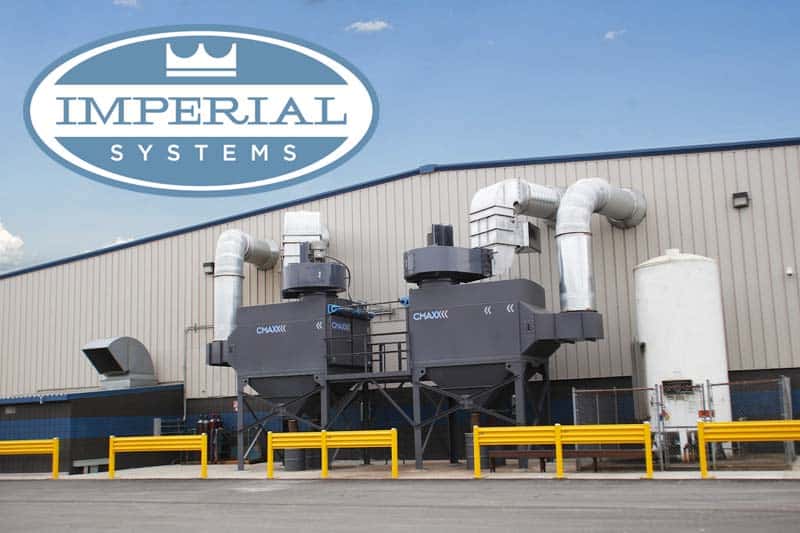
by Imperial Systems | Jul 15, 2016 | Uncategorized
Stalemate Between Federal Agencies May Be Moving Toward Resolution
A combustible dust standard may mean more stringent control measures and a lot more new tests and reports. Additionally, major growth in the air quality control industry may result, especially for dust collection systems.
Since 2008, the National Fire Protection Association (NFPA) and the U.S. Chemical Safety Board (CSB) have been making recommendations to OSHA. They assert a need for a formal standard for combustible dust. This is to prevent worker injuries and deaths due to dust explosions. OSHA established a “National Emphasis Program” to provide more information and awareness about dust control and combustible dust hazards. They have yet to establish any formal, enforceable standards. The CSB continues to make recommendations for such a standard in their investigations of explosions and resulting fatalities (http://www.csb.gov/us-chemical-safety-board-determines-osha-response-to-seven-open-csb-recommendations-on-dust-fuel-gas-and-process-safety-management-to-be-unacceptable/) and has deemed OSHA’s response to their recommendations to be “unacceptable”. They consider an OSHA combustible dust standard to be the most important safety measure they have recommended.
Combustible Dust Standard 652 in Revision
According to John S. Forester, the managing editor at Powder & Bulk Solids, (http://www.powderbulksolids.com/) the NFPA is currently working on revisions of its standard 652, its proposed standard for combustible dust, intended to be comprehensive and to cover all industries to which it would apply.
This combustible dust standard (https://www.nfpa.org/Assets/files/AboutTheCodes/652/652_PreliminaryDraft.pdf) would require all facilities, new or existing, complete Dust Hazard Analysis testing and report their results. Also, some of the standards will apply retroactively to existing businesses. In response, OSHA seems to be responding to the call for increased regulation for the first time since 2010. However, there’s no sign of new enforceable regulations in the immediate future. Facilities that need to meet NFPA standards may find themselves dealing with the mandated Dust Hazard Analysis. This will mean increased investment in dust control systems.
The article notes market changes due to increasing regulation and the adoption of NFPA standards globally. Specifically, the market for industrial dust collectors will likely increase significantly in the following years. Demands for explosion isolation equipment will predictably be even higher. This due to reports of industrial accidents and stricter regulations circulating in the industry. An example is Imperial Systems’ independently tested, NFPA-standard CMAXX with In-Line Deflagration Arrester filters.
Testing and Analysis
The NFPA 652 will require industry-wide testing of all dusts that might be combustible. This includes a full analysis of all facilities for areas and equipment that might create a risk of dust accumulation. Examples are conveyor belts, elevators, ductwork, and ovens. Dust testing may include standards on the amount of dust allowed to accumulate on any surface and testing to determine whether the dust is in contact with hot surfaces or static buildup that could trigger ignition of that particular dust. These assessments will be an ongoing headache for many companies. Installing a system of correctly functioning dust collection equipment (and maintaining it or having our ServiceMAXX professionals maintain it) can minimize that headache by keeping the dust problem minimal and keeping the facility up to standards.
While the expected boom in sales of industrial dust extraction and explosion suppression equipment is good news for our industry, it’s especially good news for Imperial Systems, since our CMAXX with IDA filters already meets NFPA standards and should continue to meet the new standards in the future. If you already have one of our systems and it is well-maintained and operating properly, you should be prepared to weather any new regulations for explosion-containing dust collection systems. Perhaps you’re using another type of dust collector. In that case, measures such as high-speed abort gates and our fire-retardant DeltaMAXX nanofiber filters can help you be in compliance with current and future standards.
Have questions about what you need to be prepared? Then give one of our knowledgeable team members a call today at 800-918-3013!
Read more

by Imperial Systems | Jul 13, 2016 | Uncategorized
People often use baghouses and dust collectors as synonyms. What is a baghouse? It is a system in which bags made of various materials filter the air. The system periodically cleans the bags to remove accumulated dust.
Today, cartridge dust collectors are increasingly popular in many industries, and for good reason. Cartridge filters can pack a lot of surface area into a small space. They can also filter very small (sub-micron) particulate very efficiently. For some industries, this is essential. This includes metalworking, which generates smoke and fumes that contain potentially toxic materials.
The baghouse, however, has been a workhorse for industrial dust control for many years and continues to serve its role today. While the basic concept remains the same, today they are more adaptable than ever. This is due to new filter materials and new ways to solve problems. Not every industry produces dust that’s fine enough to need the high efficiency of a cartridge collector. The baghouse efficiency is sufficient in plenty of cases.
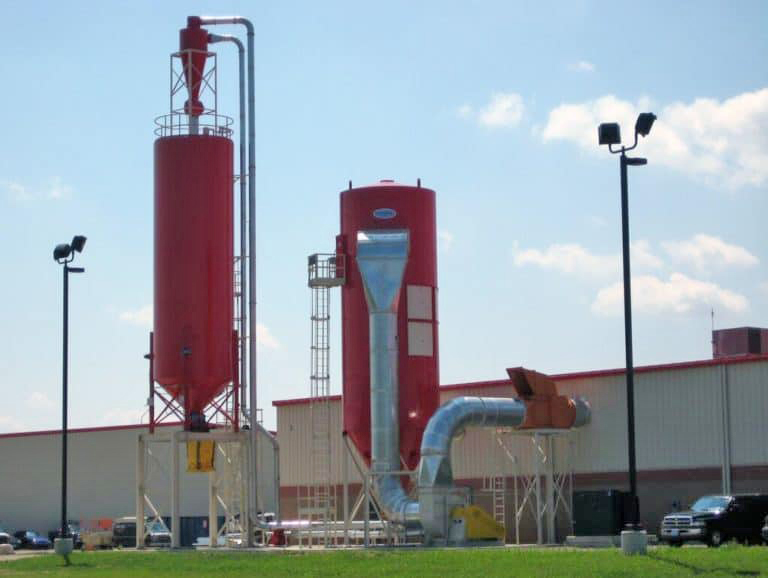 Types of Baghouses
Types of Baghouses
So how does a baghouse dust collector work? Generally, all baghouses have a tube sheet to which the bags attach. They also have an inlet for dirty air and an outlet for clean air. Then there’s an opening at the bottom for collected dust to drop out. The location of these features depends on the type of baghouse. The main differences between types of baghouses are how they clean the bags.
Shaker Baghouses
A shaker baghouse cleans the bags by mechanically shaking them. The bags usually hang from the top of the unit and attach to the tube sheet at the bottom. In this type of system, air typically enters from the bottom. The system pulls the air through to collect dust on the inside of the bags. Clean air then exits at the top while collected dust remains inside the bags.
To clean the bags, the airflow must first be shut off. Then the hanging mechanism shakes the bags to get rid of the dust, which drops out the bottom. These are not the most efficient types of baghouses and can be high-maintenance. Yes, the design is simple and does not require compressed air or complicated supports for the bags. However, damage to the bags can occur from the mechanical shaking mechanism.
Reverse Air Baghouses
In a reverse air filter bag house like our BRF, dirty air enters the collector and dust collects on the outside of the bags, which are supported by a metal cage to keep the air pressure from collapsing them. Steady air circulation continuously pulls air through the filter bags. For cleaning, a fan rotates over the bags, blowing reverse air into them to remove dust.
This type of reverse air baghouse generates a lower pressure than the compressed air pulses of a pulse jet. This decreases wear and tear on the bags and saves on the cost of compressed air. They are usually very cost-efficient and when using within the design parameters, they are also very effective. Also, this type of reverse air baghouse can continue running while cleaning occurs.
An older type of baghouse, also sometimes referred to as reverse air, collects dust on the inside of the bags. Then it cuts off the inflow of dirty air and uses a reverse flow of clean air. This partially collapses the bags, which also removes the dust. These types of bags have rigid rings that allow them to flex but not collapse completely, or “pancake”.
These types of reverse air baghouses have to be taken offline for cleaning. But sometimes they are divided into compartments so one section at a time can be cleaned. So, you can see that the reverse air baghouse working principle can vary from brand to brand.
Pulse Jet Baghouses
A pulse jet baghouse design is somewhat similar. Metal cages support the bags and hang from a tube sheet at the top of the baghouse. Dust and air enter and dust collects on the outside surface of the bags, not the inside. Bursts or pulses of compressed air clean the bags. These travel down the length of the bag and dislodge the dust.
Because the pulse of air travels very quickly down the bags, the baghouse is cleaned without taking it offline. This allows them to operate more efficiently since the system removes dust from the bags at more regular intervals. The downside to the pulse jet bag filter design is the higher pressure and expense of compressed air. These both add to operating costs.
Operation and Maintenance Costs
The EPA provides information (link: https://www3.epa.gov/ttncatc1/dir1/cs6ch1.pdf) to help you make a general calculation of the capital costs of a baghouse dust control system. Their calculations include the cost of the collector, the bags (and cages if necessary), measurement instruments, installation costs, and the annual operating costs (electricity, compressed air, labor, and materials).
These costs will obviously vary widely. A pulse jet baghouse requires compressed air, which other types of baghouses do not need. But it may require fewer filters since they are more efficient.
Filter Replacement
One thing that is a major headache for owners of any type of baghouse: replacing the bags. This is usually a dirty, messy, and time-consuming job. It also requires the collector to be offline for a considerable period of time. It often involves working in an enclosed space. Mechanisms for attaching the bags to the tube sheets vary widely. It can be a very involved process, especially when using cages. Some companies installing new dust control equipment choose a cartridge filter collector. This is because vertical collectors like our CMAXX™ are easy to change and do not involve issues with confined spaces.
For existing baghouses that need frequent bag changes, a pleated filter bag is an option that should be considered. These have a much larger surface area and last much longer than traditional bags, which means less frequent changes. Also, pleated filter bags do not require cages, which greatly simplifies the changing process.
Conclusion
Yes, there’s a lot to know about baghouses! Call us today at 800-918-3013. Our helpful, knowledgeable team members can answer any questions you may have about them. Our goal is to provide the right dust collection solution for your application. Learn more about Imperial Systems’ baghouses.
Read more

by Imperial Systems | Jul 7, 2016 | Uncategorized
What Makes Good Chromium Go Bad? How This Anti-Corrosion Wonder Metal Can Turn Into an Occupational Health Disaster

Chromium is an amazing metal. Polish to a brilliant shine and will keep that shine without tarnishing or corroding. When allowed with other metals, it makes them harder and more corrosion-resistant. Also, electroplating with chromium gives a durable, high-polish coating. However, chromium can produce toxic metal dust.
Chromium didn’t get its name by being shiny, though. “Chroma” is the Greek word for “color.” Many chromium compounds come in bright, beautiful colors including purple, yellow, and green. For many years, chrome yellow was used to create the familiar yellow school bus. The military uses chrome pigments that reflect infrared rays to conceal vehicles. Some treated wood and tanned leather use chromium salts.
What turns this incredibly useful item into a toxic metal dust health hazard?
Metals exist in a variety of oxidation states, depending on the compounds they are part of. Metals are good at sharing electrons, so chromium, like many other metals, can exist in several different oxidation states. Hexavalent chromium or chromium (VI) is a chromium compound at the +6 oxidation state. In this form, it mimics other essential elements and tricks cells into taking it in. Depending on the site of exposure, the results can be skin damage, stomach, and intestinal injury, lung damage, and eventually lung and kidney cancer.
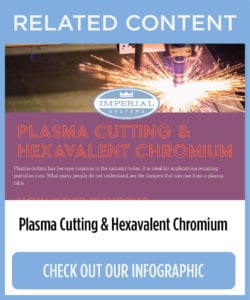 Many dyes, pigments, and primers contain hexavalent chromium in its direct form. Most exposure, though, occurs when stainless steel or other metals alloyed or coated with chromium are heated by welding, grinding, or cutting. The heat involved in these processes causes previously stable and harmless chromium to oxidize to its dangerous hexavalent form.
Many dyes, pigments, and primers contain hexavalent chromium in its direct form. Most exposure, though, occurs when stainless steel or other metals alloyed or coated with chromium are heated by welding, grinding, or cutting. The heat involved in these processes causes previously stable and harmless chromium to oxidize to its dangerous hexavalent form.
Welding fumes, grinding or metalworking dust, and fumes from plasma or laser cutting tables can all contain this form of chromium as a toxic metal dust. So can dust or smoke from treated wood, dust left over from leather tanning and residues from electroplating with chrome or from heat-treating materials with a chromium anti-corrosion coating.
Awareness Is the Key to Prevention
Remember Erin Brockovich? She made a name for herself fighting a facility in southern California. They had been using hexavalent chromium in their systems as a corrosion prevention agent and then allowed it to contaminate the groundwater. She has since gone on to participate in several other high-profile lawsuits involving the contamination of groundwater with hexavalent chromium in Missouri and Texas.
OSHA and environmental groups including the EPA closely monitor all forms of toxic metal dust including hexavalent chromium. If your facility’s dust collection equipment isn’t up to the job of handling this byproduct, your workers are at risk of health problems. Which means you could be at risk of fines. Many companies don’t know that their processes are producing hexavalent chromium. This dangerous version of a common and useful metal is found in more types of dust, smoke, and fumes than you may realize.
Check out our infographic on hexavalent chromium!
Read more

by Imperial Systems | Jul 1, 2016 | Uncategorized
The Mechanics of Deflagration: Dust Testing Research
Some dusts are more dangerous than others. The organizations that set standards for combustible dust management, like OSHA and the National Fire Protection Association, run dust testing on many types of dust to determine how dangerous they are and what conditions make them explode.
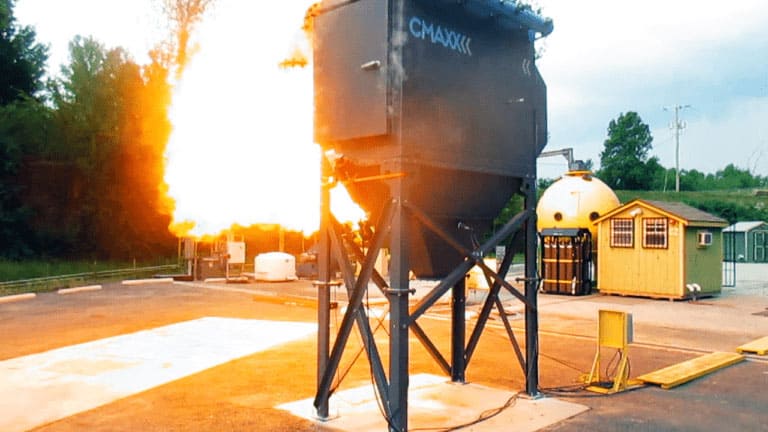
In many cases, these formal tests replicate what common sense would already tell you. Combustion chambers are often used to measure the amount of pressure that’s produced when a measured amount of a dust is ignited. They are used to measure the minimum concentration of the dust that’s needed to start a deflagration. This is an important number, because even if you don’t normally produce enough dust to reach the concentration that could ignite, a heavy day of fabrication or dust dislodged from overhead surfaces could raise that into the danger zone.
Methods of Dust Testing
A combustion chamber is also used to test another key component of an explosion: the amount of oxygen needed to fuel it. Fire requires oxygen, but depending on how flammable a material is, it may burn even in an environment with low oxygen.
A spark igniter creates sparks to test the minimum amount of energy needed ignite a deflagration. Materials that are very easily ignited by even a small spark are a hazard in any situation where there is static discharge, even in the absence of any heat or flame.
A furnace is used to test how hot a material has to get before it will spontaneously ignite without a direct heat source. A cloud of dust may not burn even in very, very hot air unless there is a spark or flame to ignite it. If the dust ignites in the furnace, it means that temperature control is a key factor in handling this dust safely.
Some dust testing use a hot surface to test whether dust will ignite when a surface with a layer of dust on it is heated. Again, some types of dust may not ignite even when exposed to very high temperatures unless there is a spark or flame, but some types of dust may ignite from being in contact with a hot surface, and this type of dust is dangerous anywhere that it could come into contact with hot materials.
Conclusion
These factors together are used to calculate a deflagration index, which is an overall rating of how likely that type of dust will produce a deflagration. This index is used to group dusts into explosion classes: Class 0 in non-explosive (silica), Class 1 is weakly explosive (charcoal, zinc, many food products), Class 2 is strongly explosive (wood flour, many plastics) and Class 3 is extremely explosive (aluminum and magnesium dusts, some plastics and other chemicals)
Read more


 Types of Baghouses
Types of Baghouses

